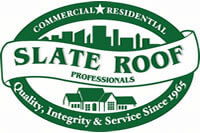We are blessed in northern NJ and Westchester County, NY, to have many homes and public buildings that date back to the Colonial and early American eras, through the Victorian age and the early part of the 20th century. This opens the door to various roofing options when trying to restore or refurbish these historical buildings.
As we shared in a previous post, historical buildings provide an important link to our past. They often hold hidden architectural gems that cannot be replicated today. The craftsmanship provides a glimpse into the aesthetics and building practices of another time. And their preservation is a source of civic pride.
As a critical element in preservation, planning the roofing on historical buildings—from cosmetic and structural perspectives—holds its own considerations. Whether restoring or replacing the roofing on historical buildings, here are some points that architects, preservationists, and roofing contractors should keep in mind before starting the project. Think age, size, style, features, materials, and equipment.
Types and quality of historical roofing materials
Roofs of a certain age are likely to be made of materials not-so-commonly used in more modern structures. Roofing a historically significant building requires sensitivity to the accuracy of the period in which they were constructed—or finding a reasonable substitute if the original roofing material is not available or difficult to procure.
These roofing materials are found on old-world homes in styles such as Dutch colonials, Spanish colonials, Gothic Revival, Victorian, and Craftsman styles.
- Slate: Used as a roofing material for ages, slate’s distinguished, old-world appeal is long-lasting (for 100 years or more in many instances). However, slate can be damaged by strong storms or heavy objects.
- Wood: Wood and shake shingles have decreased in popularity over the years due to the maintenance they require as well as their immediate and long-term cost.
- Copper: Copper has been and continues to be a popular choice for roofing because it resists corrosion and decay, giving it a lifetime of 50+ years depending on location. Beyond its durability, copper also suits a variety of aesthetic goals.
- Other metals: Very old buildings may have sheet iron (dating back to the late 1700s), corrugated iron and zinc-galvanized roofing (mid-1800s), and tin-plated iron.
- Clay tiles: Perhaps even more durable than copper, clay tiles can last upwards of 100 years, which is why they can be found on many landmark structures.
We urge anyone involved in roofing historical buildings to not skimp on quality. Just as the original materials lasted for 50-100 years, a roof restoration or replacement should last every bit as long when using high-quality roofing materials.
Roof features and roof lines
Preserving the original features of these roofs is as important as using the proper materials. Be sure plans include restoration of:
- The ornate turrets, domes, dormers, and decorative eaves of Victorian-era buildings
- Gable shapes, hip roofs, and balustrades found on homes of the Federal style
- Medieval and Gothic-style gables
- Front-gabled, medium-pitched Craftsman roofs, with deep eaves that may display exposed rafters
- The steep roof lines and square dormers on Dutch Colonial buildings
- Gutter systems, such as Yankee gutters
- Chimneys—often several on buildings constructed before central heating was used
- Parapets (to be repaired and restored or replaced)
- Antique weather vanes
Other considerations for roofing historical buildings are:
The size of the building as well as the ease of maintaining the new roofing material affect project cost and planning.
Climate and environmental factors that affect material longevity and structural integrity. These include extreme temperatures or wide temperature fluctuations; high winds, tropical storms, tornadoes, or hurricanes; snow and ice; areas with high potential for debris strikes.
Renovations or modifications since the structure was built. If these exist, do they require workarounds for the roofing work? Modern external roof structures such as HVAC or plumbing stacks, or antennas must also be factored into the restoration.
Condition of the underlayment and structure, and what will be needed for any necessary repairs. For example, insect infestation or water penetration may have damaged sheathing, or significant deterioration of the building may require temporary stabilization measures.
Intended purpose of the restored home or building. Preservationists and architects may be planning a new purpose for the building, with considerations associated with that initiative. For example, turning a historical home into a museum or converting an Industrial Age factory mill into multifamily housing.
Expertise and equipment for historical roof layouts and configurations
When selecting a roofing contractor for a historical roofing project, be sure to engage one with the experience, equipment, and expertise these specialty roofing projects require.
As part of our extensive roof restoration work, Slate Roof Professionals performs a range of other services, including chimney pointing and rebuilding, waterproofing, custom carpentry, painting, and masonry. We are also experts in installing and repairing Yankee gutters. Learn more about our roof restoration projects here.


